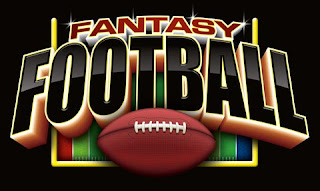With today being the first day of
rifle season in Pennsylvania, it makes me feel a bit nostalgic writing this
spending time away from my dear state.
Where I live, the first day of buck
season is considered a holiday and we actually get the day of from school. The
schools figure they might as well cancel for the day because most kids don’t
come in anyway since they all come down with this odd disease called “buck
fever”.
The real “sport” of hunting stems
back to fathers who would hold contests for men who wanted to marry their
daughters in ancient tribes long ago. Whoever brought back the largest kill and
proved himself the best hunter was awarded the daughter’s hand in marriage for demonstrating
he could provide for the family.
But what
all goes into hunting today?
Hunting requires both skill and
knowledge accompanied by a lot of patience.
Sport
hunting as we know it today is done out of enjoyment rather than necessity.
This means that there is no urgency to get a kill because it isn’t needed for
survival.
But many
people (especially where I’m from) put in the same amount of time and
preparation that athletes do practicing for their games.
The definition
of a sport is an active diversion requiring physical exertion and competition,
and that’s exactly what hunting is. You can’t just stroll into the woods, post
up for a few minutes, and pray that a deer walks in front of you. Some people
occasionally get lucky and this happens, but many wait years to finally bag
that monster buck.
Hunting
requires going out and planting plots to attract the deer, setting out feed and
salt licks, tracking, and setting up tree stands. That all necessitates quite a
bit of physical labor. There is also the time and preparation needed to figure
out where the deer are, their travel routes, and at what time they’re most
likely to wonder by your spot. On top of that is when the big day arrives and
you’re trudging up the mountain at 5:00 AM in 250 weather wearing 15
pounds of gear to keep warm. Toting your gun along and trying to pick up your
feet that are weighed down by hunting boots IS physical exertion.
Let’s add
on to the physical aspect of hunting by assuming that you’re going to be
tracking your prey through the early morning, sunny afternoon, snow, rain,
dusk, or whatever other elements you may face. And if you get lucky, dragging
your trophy is no small task either. Also don’t forget that skinning and
gutting are part of the fun too!
I haven’t exactly portrayed hunting
in the best light now have I? So why do it?
I asked my cousin (the beauty queen
pictured below with her trophy buck, and the following was her reply):
“There is no better trophy than
seeing your prize up on the wall. I know at our camp if you get a shooter buck (what
the camp qualifies as enough to mount on the wall there) you don’t have to pay
the individual $200. There’s a certain amount of satisfaction seeing your prize
mounted where everyone else can view it too. Today it’s as much a contest for
personal records as it is between people. You’re competing with the rest of the
world, or your camp group or family. It’s a competition just like any other
sport because you’re competing for the ultimate bragging rights and the biggest
trophy.”
A sport needs to have fans correct?
Fans are what keep a sport and industry going. Well considering the number of
hunting magazines available I’d say there is an awfully large fan base. There
are also many shows on TV today that give the same amount of attention to
hunting that it does to other sports. These shows also generate many major
stars such as Michael Waddell and Don and Kandi Kisky. These professional
hunters have a following that not only keeps them in business, but allows them
to market to the hunting world different products, strategies, and shows.
Hunting may not take the same
amount of athleticism as other sports, but by definition I think it most
definitely qualifies as a sport. It’s something in which you’re competing and
trying to win at. You work to be successful. For many, it defines them and is a
part of who they are. Their lives revolve around hunting and whatever is in
season.
Some may question whether or not
hunting is ethical. I know many people here in New York frown on hunting
because “it’s wrong”, but I was raised knowing some animals are overpopulated
and this is an enjoyable way to take care of that problem. Whether or not you
agree is your prerogative, but for this “hicktown princess” as I’m so lovingly
refereed to here at school, hunting is a sport, a pastime, and a way of life.
Xoxo,
~Francesca
Xoxo,
~Francesca

